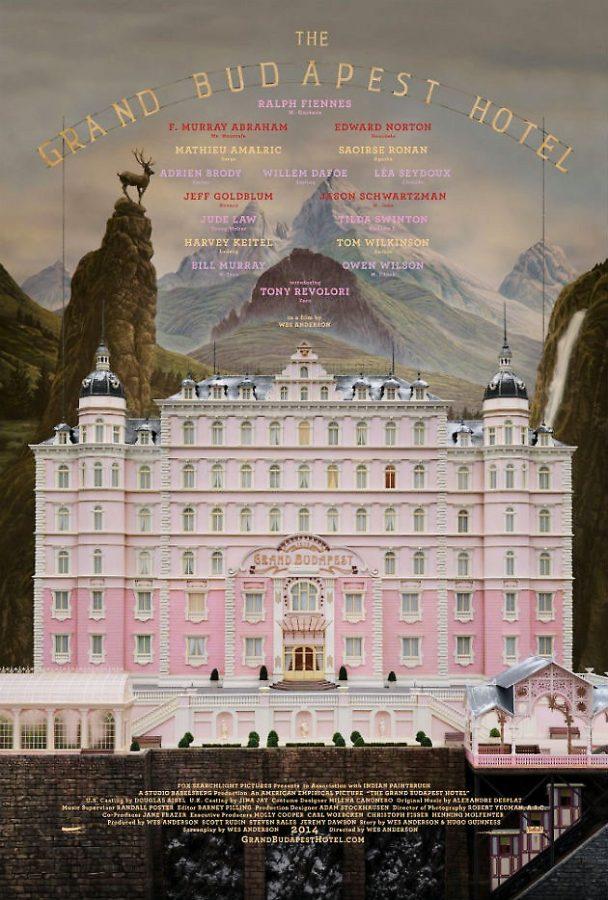“The Grand Budapest Hotel” is the most Wes Anderson movie the director has made to date. Anderson’s gone all out with his visual style, constructing arresting tableaus and backdrops to zany events. However, his quirky characters, not unlike those of his previous films, have lost their relatable humanity and are more like caricatures.
The tale of the Grand Budapest Hotel is told via a frame story. Some unknown young girl reads a chapter of a memoir from the “Author” about a story he was told by the elderly owner of the hotel when he was a young man. I can’t even tally how many years and how many different people the story is filtered through before it gets to the audience. This is a movie that concerns itself with a romanticized past.
As a young lobby boy at the Grand Budapest Hotel, located in the fictional European republic of Zubrowka, Zero Moustafa (Tony Revolori) reports to Monsier Gustave H. (Ralph Fiennes), the consummate professional and concierge of the hotel who enjoys waxing poetic, but usually interrupts himself with a well-timed expletive. Murmurs of an impending war grow, and abruptly, Gustave and Moustafa find themselves embroiled in a murder conspiracy that hinges on a priceless painting titled “Boy With Apple.” Things, as they tend to do, quickly spiral out of control.
As per his style, Anderson throws a quirky cast of characters at the audience, a list even more inexhaustible than in his previous movies. Fiennes anchors the film as M. Gustave with Revolori as a young Moustafa by his side. Adrien Brody is the nefarious, mustachioed Dmitri Desgoffe-und-Taxis, and Willem Dafoe plays J.G. Jopling, whose trench coat screams assassin, which is exactly what he is. Jeff Goldblum is the by-the-book Deputy Kovacs, and Edward Norton is Inspector Henckels. Saoirse Ronan plays the fair Agatha, Zero’s love interest. And that’s not even the last of the well-known names that pop up.
Of the many overt elements in the film, the most noticeable is how the film is shot. Anderson has taken his visual style to its seemingly absolute and full realization. Characters are always obeying the rule of thirds, perfectly occupying the frame. This could be shown to film students as a clinic on how to compose a frame. The production design is immaculate, locations and costumes vibrant. Anderson shoots the majority of the scenes as flat space, creating tableaus that look like a pop-up book.
Beyond the ornate style and elaborate form of the film, there is heart — a tale of a time, place and way of living that’s long gone by. M Gustave becomes more of a sympathetic character, one with dimensions other than idiosyncrasies, and Agatha establishes an innocence that is absent from everyone else.
However, this film takes too long to give the audience something to hold onto. There is a lot of noise and motion in this movie, with its dozen or so characters going every which way, subtle jokes coming at you in a flurry. There’s certainly a pleasure in admiring how the film looks, but the dysfunctional, relatable characters of other Anderson films, like “Rushmore” and “The Royal Tenenbaums,” have been replaced with characters that embody their quirks, and nothing more. The humanity comes out eventually, but still, I found myself asking more than halfway through what the point of it all was.









